Sewing around curves on three-dimensional objects like bags and sewing machine covers can be tricky. There’s a lot of bulk to be distributed, and if the object is lined and/or interfaced, the reinforced fabric may not be as pliable. I’ve devised a method of pinning and sewing that works for me, so I thought you might like to see how I do it.
My example is a sewing machine dust cover I just finished for my friend Vickie S.’s birthday. The cover has three main pieces: the main body, which is a rectangular shape that goes from front to back over the sewing machine, and side panels that are curved at the top. The pieces are sewn wrong sides together and then bound with double-fold bias binding.
Here’s what the finished dust cover looks like:
On the right side of the main body piece, I make marks in the seam allowance at the middle and corners. (The corner marks are determined by the finished depth measurement of the sewing machine.) I staystitch a scant 1/4″ where the main body will curve around the rounded top edges of the side panels. My stitching line is about 3″ long, meaning it extends 1½” on each side of the corner mark. (You can see this 3″ line of stitching on the photo below. I also stitched 1/8″ from the edge all around the main body after attaching the lining.) Then I clip to the stitching line, making my cuts 1/8″ to 1/4″ apart.
The staystitching step is important because it 1) reinforces the area where the fabric was clipped, and 2) gives me a line to follow when I am ready to sew around the curve.
Starting in the center of one long edge, wrong sides together, and working from the right side of the main body, I pin one side panel to the main body piece, turning the clipped edges of the main body to follow the curve of the side panel:
The clipped edge of the main body is easily shaped into a curve, matching the curved edge of the side panel underneath. See how the excess fabric of the main body piece forms a funnel? At the corner I angle a pin on either side of the funnel. The rest of the pins are perpendicular to the raw edges.
The second curve is ready to be pinned:
At the sewing machine, I maintain the funnel shape as I start sewing the first side. As I near the first rounded corner, I flatten the funnel with my left hand, making sure the folds in the funnel don’t interfere with the stitching line. I stitch directly on top of the staystitching, turning the fabric as I go to maintain the curve :
Note that this row of stitching is still a scant 1/4″ from the raw edges. When the bias binding strip is sewn on, it will be a full 1/4″ seam, covering the previous line of stitching.
Now I am ready to attach the bias binding. No pinning needed for this part. As I approach the curve I flatten the funnel again:
Then I position the binding. Because the binding is bias, it’s easy to shape it around the curve. In the photo below you can see that I have drawn a light pencil line on the 1/4″ seamline. This helps me maintain the right shape of the curve as I am sewing around the corner.
I can feel as I go around the curve that the fabric directly under the needle is flat because the fullness from the main body has been pushed to the left, away from the stitching line.
Now all I need to do is fold the binding over the seam and fuse it with 1/4″-wide Steam-a-Seam 2. I could stitch it down by hand but I find that the fusible web does a great job of holding the binding in place, and it’s much faster than sewing it by hand.
Here’s a closer look at the bound edges, first from the top . . .
. . . and now from one side:
And here’s a peek at the lining fabric inside:
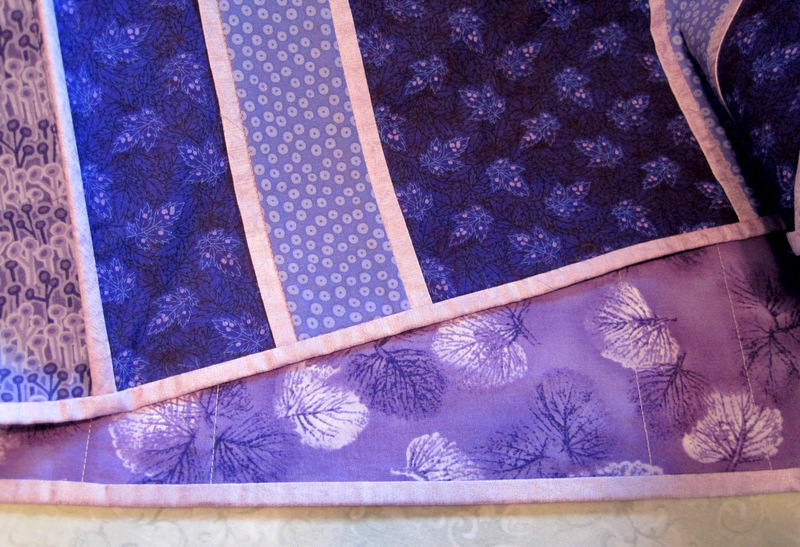
Vickie’s birthday was at the end of November so I’m a wee bit late with her gift. I hope she thinks the wait was worth it!

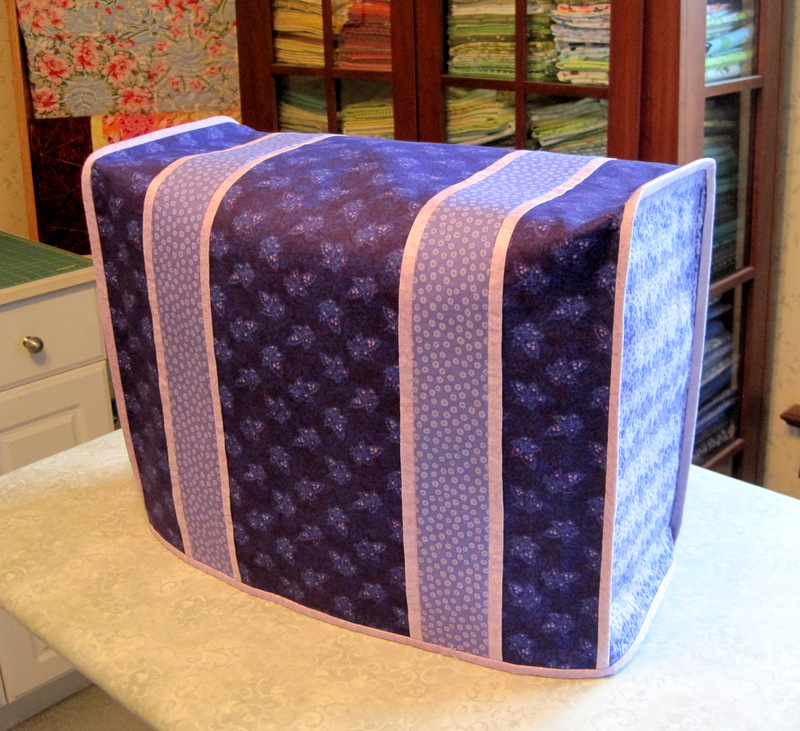
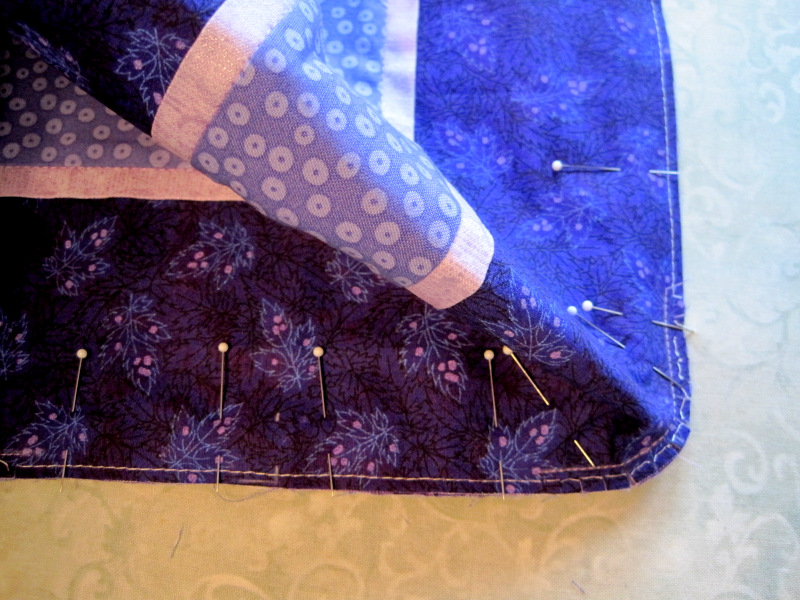
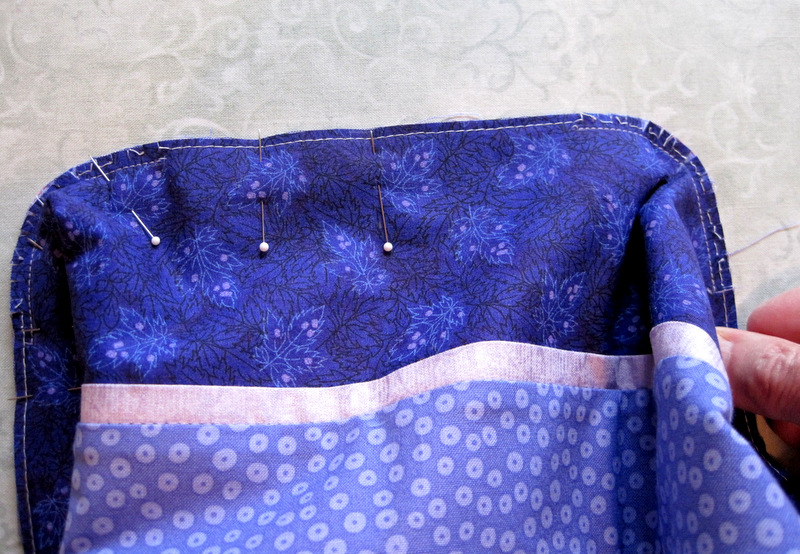

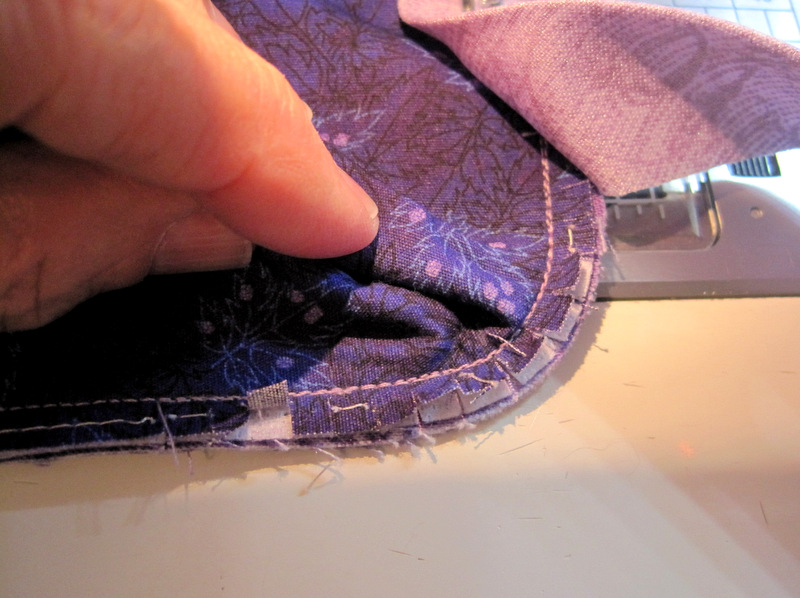
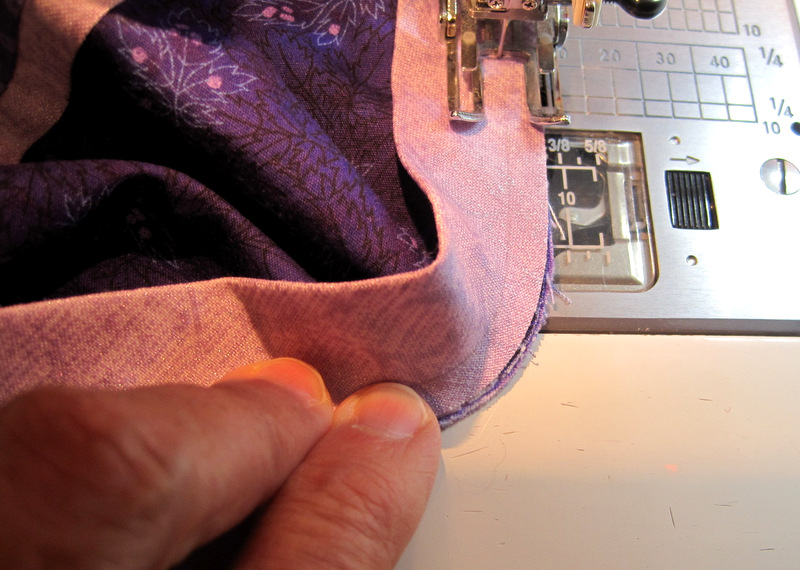
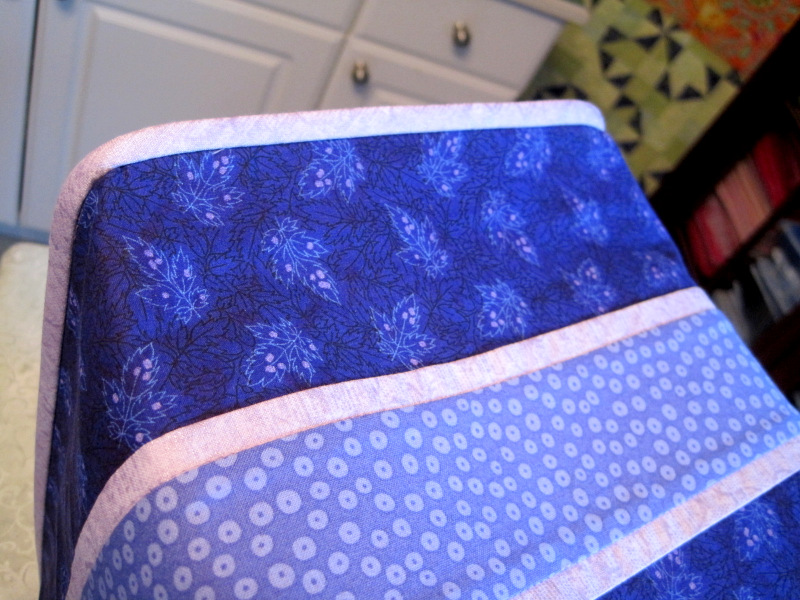
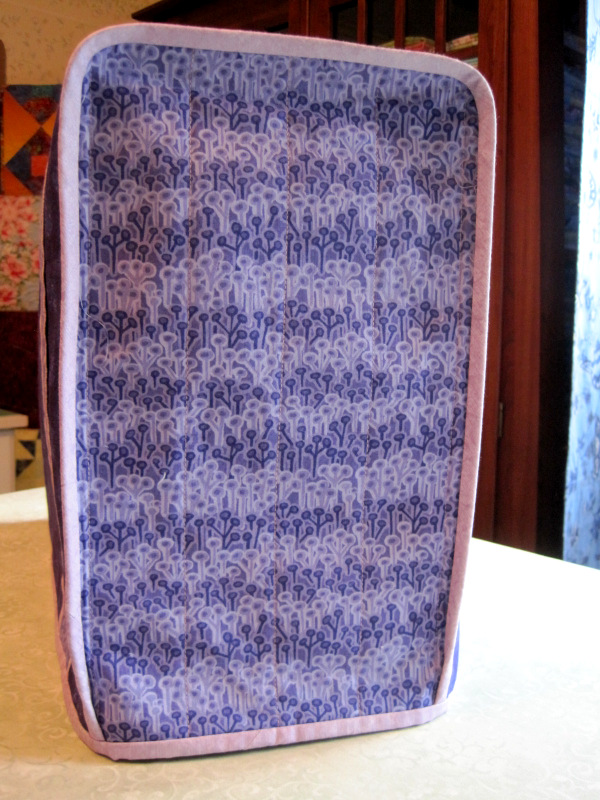
Great tutorial Dawn! Even I could follow it ;)! Beautiful machine cover too. I’m sure Vickie will love it.